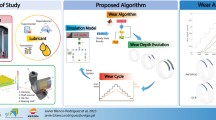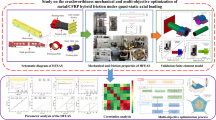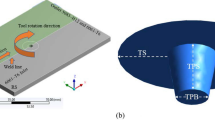Abstract
In recent times, many industrial applications have demanded innovative energy-efficient solutions. One of the main causes of energy loss is due to friction between body surfaces in contact. A great amount of research has been aimed at understanding the friction mechanisms to allow for its reliable prediction during multibody simulation. In the 1950s and 1960s, many experimental studies were carried out, leading to the coefficient of friction formulas for lubricated surfaces under a combination of sliding and rolling relative motion. The formulas have been mainly derived by the mathematical fitting of results obtained from experimental measurements on rolling disks and different load, lubricating and kinematic conditions. The purpose of this paper is twofold: on the one hand, it reviews semi-empirical formulas for computing the friction coefficient in lubricated contact under various operating conditions; on the other hand, it implements and compares contact force models coupled with the metal-metal lubricated empirical friction formulas in a multibody dynamics simulation environment. Implementing empirical formulas is straightforward and computationally efficient, but one can evaluate the performance of these models in characterizing the dynamics of the lubricated joint. For this purpose, a multibody simulation of a Scotch yoke and a Whitworth quick return mechanisms with a nonideal prismatic joint are conducted. The existence of clearance causes the dynamic behavior of the system to be different from the ideal joint. The difference between each friction coefficient model is emphasized by simulation output and computation time.


















Similar content being viewed by others
Data Availability
No datasets were generated or analysed during the current study.
Abbreviations
- \(\alpha\) :
-
Piezo-viscosity coefficient of the lubricant
- \(\delta\) :
-
Contact penetration
- \(\dot{\delta}\) :
-
Contact penetration velocity
- \(\dot{\delta}_{0}\) :
-
Impact velocity
- \(\eta_{0}\) :
-
Dynamic viscosity of the lubricant
- \(\lambda\) :
-
Specific film thickness
- \(\mu\) :
-
Friction coefficient
- \(\nu_{0}\) :
-
kinematic viscosity of the lubricant
- \(\omega\) :
-
Rotational speed
- \(\rho\) :
-
Density of the lubricant
- \(\vartheta\) :
-
Rotational angle
- \(c_{d}\) :
-
Dynamic correction factor
- \(c_{r}\) :
-
Restitution coefficient
- \(E\) :
-
Young’s modulus
- \(f_{n}\) :
-
Normal contact force per unit length
- \(F_{n}\) :
-
Normal contact force
- \(F_{t}\) :
-
Friction Force
- \(G\) :
-
Material parameter of the Hamrock and Dowson formulation
- \(h_{c}\) :
-
Oil central film thickness
- \(K\) :
-
Contact stiffness
- \(L\) :
-
Contact width
- \(n\) :
-
Stiffness exponent
- \(R_{e}\) :
-
Equivalent radius of curvature
- \(R_{i}\) :
-
Curvature radius of surface \(i\)
- \(S\) :
-
Surface roughness
- \(U\) :
-
Velocity parameter of the Hamrock and Dowson formulation
- \(V_{0}\) :
-
Static threshold velocity
- \(V_{1}\) :
-
Dynamic threshold velocity
- \(V_{\Sigma}\) :
-
Sum of profiles velocities
- \(V_{e}\) :
-
Lubricant entraining velocity
- \(V_{r}\) :
-
Rolling velocity
- \(V_{s}\) :
-
Sliding velocity
- \(W\) :
-
Load parameter of the Hamrock and Dowson formulation
References
Coulomb, C.A.: Théorie des machines simples, en ayant égard au frottement de leurs parties, et à la roideur des cordages. Bachelier (1809)
Morin, A.: Note sur la resistance au roulement des corps les uns sur les autres et sur le reaction elastique des corps qui se comprime reciproquement. C. R. Acad. Sci. 13, 1022–1023 (1841)
Reynolds, O.: On rolling-friction. Philos. Trans. R. Soc. Lond. A 166, 155–174 (1876)
Merritt, H.E.: Worm gear performance. Proc. Inst. Mech. Eng. 129(1), 127–194 (1935)
Tabor, D.: The mechanism of rolling friction II. The elastic range. Proc. R. Soc. Lond. Ser. A, Math. Phys. Sci. 229(1177), 198–220 (1955)
Eldredge, K., Tabor, D.: The mechanism of rolling friction. I. The plastic range. Proc. R. Soc. Lond. Ser. A, Math. Phys. Sci. 229(1177), 181–198 (1955)
Bowden, F.P., Tabor, D.: Friction, lubrication and wear: a survey of work during the last decade. Br. J. Appl. Phys. 17(12), 1521–1544 (1966)
Hersey, M.D.: Rolling friction, I - historical introduction. J. Lubr. Technol. 91(2), 260–263 (1969)
Hersey, M.D.: Rolling friction, III - review of later investigations. J. Lubr. Technol. 91(2), 269–275 (1969)
Martin, K.: A review of friction predictions in gear teeth. Wear 49(2), 201–238 (1978)
Michlin, Y., Myunster, V.: Determination of power losses in gear transmissions with rolling and sliding friction incorporated. Mech. Mach. Theory 37(2), 167–174 (2002)
Stefanelli, R., Valentini, P.P., Vita, L.: Modelling hydrodynamic journal bearing in 3d multibody systems. In: ASME-IDETC/CIE 2005, sep American Society of Mechanical Engineers, Long Beach (2005)
Flores, P., Ambrósio, J.A.C.: Revolute joints with clearance in multibody systems. Comput. Struct. 82(17–19), 1359–1369 (2004)
Flores, P., Ambrósio, J.A.C., Pimenta Claro, J.C., Lankarani, H.M., Koshy, C.S.: A study on dynamics of mechanical systems including joints with clearance and lubrication. Mech. Mach. Theory 41(3), 247–261 (2006)
Zhao, B., Cui, Y., Xie, Y., Zhou, K.: Dynamics and lubrication analyses of a planar multibody system with multiple lubricated joints. J. Eng. Tribol. 232(3), 326–346 (2018)
Zhao, B., Zhou, K., Xie, Y.: A new numerical method for planar multibody system with mixed lubricated revolute joint. Int. J. Mech. Sci. 113, 105–119 (2016)
Fang, C., Meng, X., Lu, Z., Wu, G., Tang, D., Zhao, B.: Modeling a lubricated full-floating pin bearing in planar multibody systems. Tribol. Int. 131, 222–237 (2019)
Velex, P., Cahouet, V.: Experimental and numerical investigations on the influence of tooth friction in spur and helical gear dynamics. J. Mech. Des. 122(4), 515–522 (2000)
Mushirabwoba, B., Belfals, L., Brahim, N., Abdelilah, L.: A comparative study of friction laws used in spur gear power losses estimation. Contemp. Eng. Sci. 9(6), 279–288 (2016)
Song, N., Peng, H., Kan, Z., Chen, B.: A novel nonsmooth approach for flexible multibody systems with contact and friction in 3D space. Nonlinear Dyn. 102(3), 1375–1408 (2020)
Peng, H., Song, N., Li, F., Tang, S.: A mechanistic-based data-driven approach for general friction modeling in complex mechanical system. J. Appl. Mech. 89(7), 071005 (2022)
Kan, Z., Peng, H., Chen, B.: A simple linear complementarity approach for sliding cable modeling considering friction. Mech. Syst. Signal Process. 130, 293–314 (2019)
Song, N., Zhang, M., Li, F., Kan, Z., Zhao, J., Peng, H.: Dynamic research on winding and capturing of tensegrity flexible manipulator. Mech. Mach. Theory 193, 105554 (2024)
Flores, P., Ambrósio, J.A.C., Pimenta Claro, J.C., Lankarani, H.M.: Kinematics and Dynamics of Multibody Systems with Imperfect Joints: Models and Case Studies. Springer, Berlin (2010)
Flores, P., Lankarani, H.M.: Contact Force Models for Multibody Dynamics. Solid Mechanics and Its Applications, vol. 226. Springer, Cham (2016)
Autiero, M., Cera, M., Cirelli, M., Pennestrì, E., Valentini, P.P.: Review with analytical-numerical comparison of contact force models for slotted joints in machines. Machines 10(11), 966 (2022)
Schwab, A., Meijaard, J., Meijers, P.: A comparison of revolute joint clearance models in the dynamic analysis of rigid and elastic mechanical systems. Mech. Mach. Theory 37(9), 895–913 (2002)
Pereira, C., Ramalho, A., Ambrósio, J.A.C.: Experimental and numerical validation of an enhanced cylindrical contact force model. In: De Hosson, J.M., Brebbia, C. (eds.) Surface Effects and Contact Mechanics X. Volume 1 of WIT Transactions on Engineering Sciences, sep, pp. 49–60. WIT Press, Southampton (2011)
Pereira, C., Ramalho, A., Ambrósio, J.A.C.: Applicability domain of internal cylindrical contact force models. Mech. Mach. Theory 78, 141–157 (2014)
Skrinjar, L., Slavič, J., Boltežar, M.: A validated model for a pin-slot clearance joint. Nonlinear Dyn. 88(1), 131–143 (2017)
Skrinjar, L., Slavič, J., Boltežar, M.: A review of continuous contact-force models in multibody dynamics. Int. J. Mech. Sci. 145, 171–187 (2018)
Lankarani, H.M., Nikravesh, P.E.: A contact force model with hysteresis damping for impact analysis of multibody systems. J. Mech. Des. 112(3), 369–376 (1990)
Pereira, C., Ramalho, A., Ambrosio, J.: An enhanced cylindrical contact force model. Multibody Syst. Dyn. 35, 277–298 (2015)
Johnson, K.L.: Contact Mechanics, Reprint edn. Cambridge University Press, Cambridge (2008)
Pennestrì, E., Rossi, V., Salvini, P., Valentini, P.P.: Review and comparison of dry friction force models. Nonlinear Dyn. 83, 1785–1801 (2016)
Andersson, S., Söderberg, A., Björklund, S.: Friction models for sliding dry, boundary and mixed lubricated contacts. Tribol. Int. 40(4), 580–587 (2007)
Zhang, Y., Liu, H., Zhu, C., Liu, M., Song, C.: Oil film stiffness and damping in an elastohydrodynamic lubrication line contact-vibration. J. Mech. Sci. Technol. 30, 3031–3039 (2016)
Stribeck, R.: Die wesentlichen eigenschaften der gleit-und rollenlager. Z. Ver. Dtsch. Ing. 46, 1341–1348 (1902)
Benedict, G.H., Kelley, B.W.: Instantaneous coefficients of gear tooth friction. A S L E Trans. 4(1), 59–70 (1961)
Tallián, T.: The theory of partial elastohydrodynamic contacts. Wear 21, 49–101 (1972)
Arana, A., Larrañaga, J., Ulacia, I.: Partial ehl friction coefficient model to predict power losses in cylindrical gears. J. Eng. Tribol. 233(2), 303–316 (2019)
Xu, H.: A novel formula for instantaneous coefficients of sliding friction in gearing. Technical report, SAE Technical Paper (2007)
Autiero, M., Cirelli, M., Paoli, G., Valentini, P.P.: A data-driven approach to estimate the power loss and thermal behaviour of cylindrical gearboxes under transient operating conditions. Lubricants 11(7), 303 (2023)
Anderson, N.E., Loewenthal, S.H.: Design of spur gears for improved efficiency (1982)
Blok, H.: Hydrodynamic effects on friction in rolling with slippage. In: Bidwell, J. (ed.) Rolling Contact Phenomena, pp. 186–251. Elsevier, Amsterdam (1962)
Misharin, Y.: Influence of the friction conditions on the magnitude of the friction cefficients in the case of rolling with sliding. In: Proceedings International Conference on Gearing, Institution of Mechanical Engineers, pp. 159–164 (1958)
Sasaki, T., Okamura, K., Isogai, R.: Fundamental research on gear lubrication. Bull. JSME 4(14), 382–394 (1961)
Askwith, T., Crouch, R., Cameron, A.: The relationship of lubricants and additives for optimum effect; and a theory of scuffing. In: Proceedings International Conference on Gear Lubrication. Institution of Mechanical Engineers (1966)
Kelley, B.W., Lemanski, A.J.: Paper 11: lubrication of involute gearing. In: Proceedings of the Institution of Mechanical Engineers, Conference Proceedings 182(1), pp. 173–184 (1967)
Leach, E.F., Kelley, B.W.: Temperature - the key to lubricant capacity. A S L E Trans. 8(3), 271–285 (1965)
O’Donoghue, J.P., Cameron, A.: Friction and temperature in rolling sliding contacts. A S L E Trans. 9(2), 186–194 (1966)
Drozdov, Y., Gavrikov, Y.: Friction and scoring under the conditions of simultaneous rolling and sliding of bodies. Wear 11(4), 291–302 (1968)
Baumgarte, J.: Stabilization of constraints and integrals of motion in dynamical systems. Comput. Methods Appl. Mech. Eng. 1(1), 1–16 (1972)
Hamrock, B.J., Dowson, D.: Isothermal elastohydrodynamic lubrication of point contacts: part iii—fully flooded results (1977)
Funding
This research was funded by Italian Ministry for University and Research, project PRIN 2020: “Innovative Contact Based multibody models for noise and vibration prediction in high-performance gears” grant number 202022Y4N5. CUP: E85F22000220006
Author information
Authors and Affiliations
Contributions
Conceptualization, M.C., M.A., G.P., E.P., N.P.B. and P.P.V.; methodology, M.C., M.A., G.P., E.P., N.P.B. and P.P.V.; software, M.C., M.A., G.P., E.P.; validation, M.C., M.A., G.P.; formal analysis, M.C., M.A., G.P., E.P., N.P.B. and P.P.V.; investigation, M.C., M.A., G.P., E.P., N.P.B. and P.P.V.; resources, P.P.V.; data curation, M.A., G.P., E.P.; writing—original draft preparation, M.C., M.A., G.P.; writing—review and editing, E.P., N.P.B. and P.P.V.; visualization, M.C., M.A., G.P.; supervision, M.C., E.P. and P.P.V.; project administration, M.C.,and P.P.V.; funding acquisition, P.P.V. All authors have read and agreed to the published version of the manuscript.
Corresponding author
Ethics declarations
Competing interests
The authors declare no competing interests.
Additional information
Publisher’s Note
Springer Nature remains neutral with regard to jurisdictional claims in published maps and institutional affiliations.
Rights and permissions
Springer Nature or its licensor (e.g. a society or other partner) holds exclusive rights to this article under a publishing agreement with the author(s) or other rightsholder(s); author self-archiving of the accepted manuscript version of this article is solely governed by the terms of such publishing agreement and applicable law.
About this article
Cite this article
Cirelli, M., Autiero, M., Belfiore, N.P. et al. Review and comparison of empirical friction coefficient formulation for multibody dynamics of lubricated slotted joints. Multibody Syst Dyn (2024). https://doi.org/10.1007/s11044-024-09988-y
Received:
Accepted:
Published:
DOI: https://doi.org/10.1007/s11044-024-09988-y




